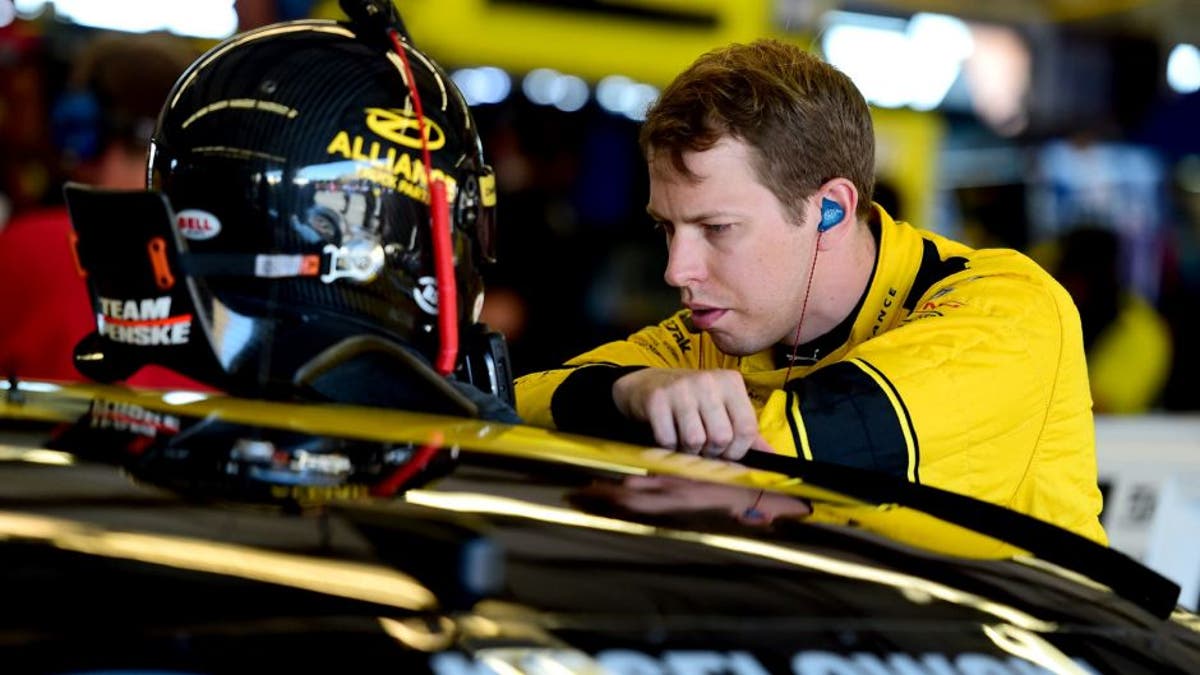
SONOMA, CA - JUNE 26: Brad Keselowski, driver of the #2 Alliance Truck Parts Ford, stands in the garage area during practice for the NASCAR Sprint Cup Series Toyota/Save Mart 350 at Sonoma Raceway on June 26, 2015 in Sonoma, California. (Photo by Jared C. Tilton/Getty Images)
The NASCAR Sprint Cup Series may be returning to Michigan International Speedway for the second time this season, yet things are going to be much different for this weekend's Pure Michigan 400.
Sprint Cup teams will once again use the high-drag aerodynamics package introduced by NASCAR at Indianapolis Motor Speedway to create closer pack racing.
The high-drag package did not receive rave reviews by the drivers after the Brickyard 400 and there are still unknowns about how it will perform on the 2-mile D-shaped oval in Michigan.
Speaking on a NASCAR teleconference Tuesday afternoon, 2012 Sprint Cup Series champion Brad Keselowski admitted this Sunday's race at MIS "will be a bit of a wildcard race with the aero package." The Team Penske driver indicated the race may appear similar to the Brickyard 400, but no one truly knows what to expect.
The one difference between the two races is the facilities themselves. Indianapolis is a unique, flat and tight 2.5-mile track that has always presented challenges to stock cars. Michigan, on the other hand, is a banked, sweeping and wide 2-mile track that often sees drivers put their cars three-, four- and sometimes even five-wide to make passes on restarts and in the corners.
With the high-drag package affecting the handling of the cars and making it difficult to pass, Keselowski hopes the increased space on the track will help lead to more competitive racing, especially in the corners.
"The way the aerodynamics work specifically a highâdraft package, you certainly want to be in line down the straightaway so you get the maximum effect of the loss of drag," explained Keselowski. "But you want to be kind of staggered in the corners to try to keep the downforce in the corner where you need it to keep the car going through the corners as fast as possible. So Indianapolis you don't have a lot of width to really pull that off. But I think at Michigan there is quite a bit more width to the track, especially down in turns three and four to where you could possibly pull that maneuver off."
One unexpected feature of the high-drag package at Indianapolis was the high temperatures it created inside the cockpit by trapping heat in the car. While the forecast for this weekend is in the mid-80s, Keselowski expects the heat issue to be even greater on Sunday.
"There is a large amount of concern across both the teams and the drivers, really all members, for this rules package coming up to Michigan," he said. "Specific to the fact that even though the track is wider and bigger, the significance of the draft is going to be even more important, so you're going to have to stay in line as much as possible. As you stay in line, the car gets less and less air because that's essentially how the draft works. And the speeds at Michigan are higher than they are at Indianapolis, which means the parts, specifically the drivetrain, are going to be even hotter.
"So I know the team is very, very concerned about the drivetrain, everything from the engine all the way back to the axles because they're really not made for these temperatures."
While the high-drag package did not win over many drivers at Indianapolis, many provided glowing reviews of the low-downforce package used at Kentucky Speedway. That package will once again be used at Darlington Raceway in Sept.
On Monday, NASCAR executive vice president and chief racing development officer Steve O'Donnell told "The Morning Drive" on SiriusXM NASCAR Radio that Sprint Cup teams would have the Chase rules package by the end of this week or after Sunday's race in Michigan.
With things up still up in the air and two more experiments left -- Michigan and Darlington -- Keselowski simply wants to put the best possible product on the track. The driver of the No. 2 Ford believes Sunday's race will provide the information needed on the high-drag package, but also wishes they could race the low-downforce package before a decision is made for the Chase rules.
"I don't believe, and I've never been of the belief that it's too late to do anything the right way," he said. "And if everyone believes that one package is heads and tails above another package, then we've got to find a way to make it work and get it in front of our fans. I don't believe it's ever too late.
"My understanding of that is it's a two-month process," he added. "So if you make that decision inside these two-month windows for these Chase races, we should be more than capable of executing it. I think that's what I'd like to see. But at the end of the day it's not my call. It's NASCAR's call."
